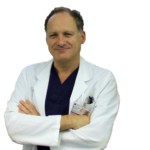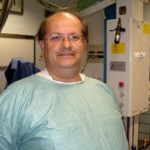Policlinico San Donato is recognized as one of the world’s leading medical centers for the treatment of arrhythmias and the study of cardiac electrical conductivity. The findings of numerous research studies conducted by the hospital’s physicians have become the foundation of international protocols for managing heart rhythm disorders.
Every year, over 1,800 ablations are performed here, including for rare forms of arrhythmia, such as Brugada syndrome. Patients with cardiac conduction disorders are fitted with portable pacemakers and defibrillators. More than 900 such procedures are carried out per year.
To ensure that all patients receive timely medical care, San Donato Clinic has been equipped with three modern laboratories for cardiac catheterization and ablation.
The department is led by Dr. Carlo Pappone. The doctor has performed 150,000 ablations and installed 120,000 pacemakers.
San Donato’s arrhythmology team also treats patients with associated cardiac conditions such as cardiomyopathy, heart failure, infectious diseases, and coronary artery disease.
Treatment methods
A modern method of treating arrhythmia is transcatheter cardiac ablation. A specialized catheter is inserted into the patient through the femoral artery or vein. Previously, open heart surgery was required. Now, only a small puncture is needed. No more invasive than a standard injection or IV placement.
The catheter is delivered through the blood vessel system to one of the chambers of the heart. To cure arrhythmia, it is necessary to specifically cauterize certain heart cells that produce the abnormal rhythm. This is called ablation.
Before ablation, doctors perform a three-dimensional reconstruction of the heart. This process involves several stages: collecting data through sensors at the end of the catheter and subsequent computer processing.
Inside the heart, the catheter is navigated using the Stereotaxis Niobe II robotic navigation system. This increases the accuracy during the procedure.
San Donato Arrhythmology Department diagnoses and treats the following diseases:
- Atrial fibrillation;
- Supraventricular arrhythmia;
- Wolff-Parkinson-White syndrome (WPW);
- Brugada syndrome;
- Kümmel tachycardia;
- Atrial flutter;
- Atrial tachycardia;
- Ventricular tachycardia, and more.
Treatment of Brugada syndrome
Brugada syndrome is a hereditary heart disease. This is associated with chromosomal mutations. Scientists have identified five genes, the breakdown of which leads to the development of the disease. The first symptoms of Brugada syndrome appear at the age of 35-45 years.
Patients may experience attacks of ventricular tachycardia and ventricular fibrillation. These conditions impair heart function and are life-threatening. Attacks lead to frequent loss of consciousness (fainting) and can lead to sudden cardiac death.
Typically, patients with Brugada syndrome receive an implantable cardioverter-defibrillator (ICD), an expensive device that delivers life-saving shocks in response to dangerous heart rhythms.
Physicians at San Donato were the first in the world to discover abnormal heart rhythm activity in Brugada syndrome. Today this condition is successfully treated – the patient undergoes transcatheter ablation. This procedure is safer and more effective than implanting a defibrillator.



